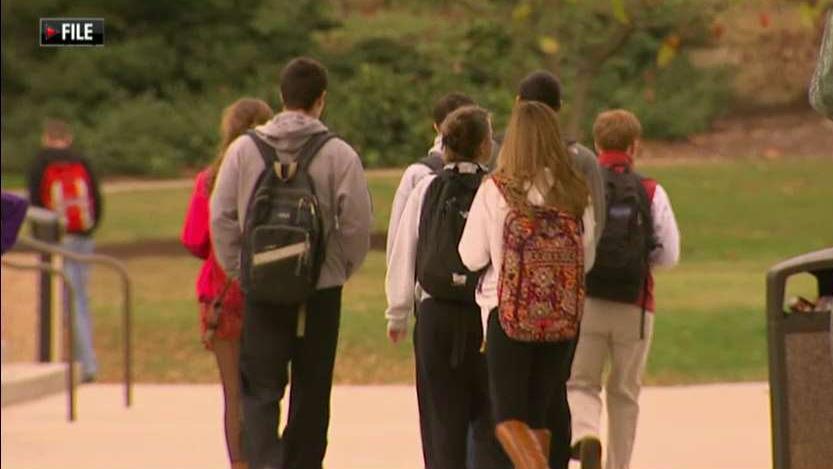What are the 'most valuable' college majors?
A new study found graduates with degrees in the fields of science, technology, engineering and math typically earn a lot more and are less likely to be unemployed, according to Bankrate.
Bankrate analyzed majors with labor forces over 15,000 people and factored in how many people in each group received a graduate degree such as a master's or a doctorate.
The most valuable college majors include naval architecture marine and nuclear engineering and pharmaceutical sciences. The top 10 most valued college majors are:
- Naval Architecture And Marine Engineering (Median income: $90,000; Unemployment rate: 1.6 percent, Percent with an advanced degree: 29 percent)
- Nuclear Engineering (Median income: $98,100; Unemployment rate: 1.8 percent, Percent with an advanced degree: 56 percent)
- Pharmacy Pharmaceutical Sciences And Administration (Median income: $100,000; Unemployment rate: 2.2 percent, Percent with an advanced degree: 58 percent)
- Genetics (Median income: $85,000; Unemployment rate: 1.2 percent, Percent with an advanced degree: 76 percent)
- Electrical Engineering (Median income: $99,000; Unemployment rate: 2.7 percent, Percent with an advanced degree: 46 percent)
- Architectural Engineering (Median income: $74,000; Unemployment rate: 1.5 percent, Percent with an advanced degree: 29 percent)
- Aerospace Engineering (Median income: $90,000; Unemployment rate: 2.3 percent, Percent with an advanced degree: 49 percent)
- Computer Engineering (Median income: $92,000; Unemployment rate: 2.8 percent, Percent with an advanced degree: 40 percent)
- Electrical Engineering Technology (Median income: $76,000; Unemployment rate: 1.8 percent, Percent with an advanced degree: 30 percent)
- Materials Science (Median income: $90,000; Unemployment rate: 2 percent, Percent with an advanced degree: 66 percent)
The least valuable degrees in terms of making a living were drama and theater arts. The 10 least valued college majors are (in order of worse to worst):
- Communication Technologies (Median income: $40,000; Unemployment rate: 4.9 percent, Percent with an advanced degree: 11 percent)
- Cosmetology Services And Culinary Arts (Median income: $35,000; Unemployment rate: 3.3 percent, Percent with an advanced degree: 12 percent)
- Mass Media (Median income: $40,000; Unemployment rate: 6 percent, Percent with an advanced degree: 16 percent)
- Music (Median income: $36,000; Unemployment rate: 3.1 percent, Percent with an advanced degree: 42 percent)
- Miscellaneous Fine Arts (Median income: $38,000; Unemployment rate: 5.7 percent, Percent with an advanced degree: 20 percent)
- Film Video And Photographic Arts (Median income: $37,000; Unemployment rate: 6.5 percent, Percent with an advanced degree: 15 percent)
- Fine Arts (Median income: $37,000; Unemployment rate: 4.8 percent, Percent with an advanced degree: 24 percent)
- Linguistics And Comparative Language And Literature (Median income: $40,000; Unemployment rate: 3.9 percent, Percent with an advanced degree: 45 percent)
- Composition And Rhetoric (Median income: $37,800; Unemployment rate: 4.4 percent, Percent with an advanced degree: 29 percent)
- Visual And Performing Arts (Median income: $32,000; Unemployment rate: 4.1 percent, Percent with an advanced degree: 23 percent)
- Drama And Theater Arts (Median income: $35,500; Unemployment rate: 5.2 percent, Percent with an advanced degree: 26 percent)
Despite these findings, Bankrate found earning a college degree does pay off in the long run. There are ways to cut down on your costs, though.
“Consider community college for the first couple of years before transferring to a university for the final years of the program,” Bankrate chief financial analyst Greg McBride, CFA, said. “Look for scholarships, grants and work-study programs — all of which could defray the out-of-pocket costs of a degree. And calibrate the cost of the school with your earning potential at the other end.”
Consider community college for the first couple of years before transferring to a university for the final years of the program.
According to the Federal Reserve, more than half of the people who attended college left with debt, with the average amount being around $20,000 to $25,000.




















